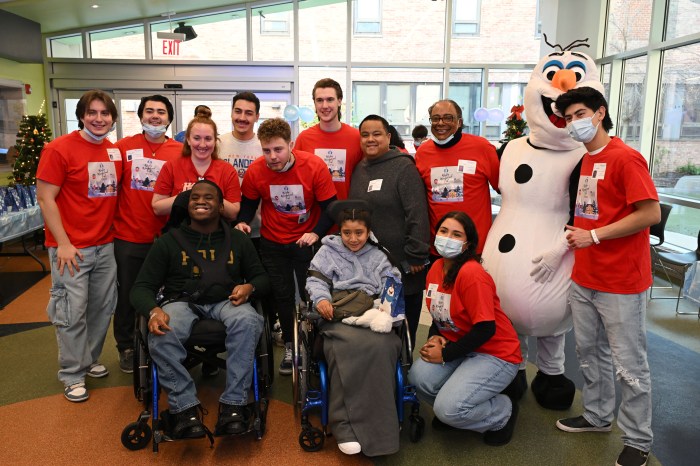As the Bayside Historical Society celebrates its 60th anniversary in 2024, the organization continues to have a significant impact on the Bayside community as a whole.
Whether it is preserving historical artifacts and buildings or educating the public about the area’s history, the Bayside Historical Society has done a lot to help educate the public on the extensive history of the area.
One of the works the organization has been successful in accomplishing on a regular basis is campaigning for historical landmarks across the community getting designated as such. Some of these landmarks include the Lawrence Cemetery, the Officer’s Club at Fort Totten, the Fort Totten historic district, which includes all the buildings there, the cobblestone house at 35-34 Bell Blvd., the Lydia Ann Bell and William Ahles House at 39-26 213th St. the Hawthorne Court apartments on 43rd Avenue and 216th Street and much more.

“These landmarks will be there long after all of us are gone,” Bayside Historical Society President Paul DiBenedetto. “The buildings that are landmarked are not arbitrarily chosen. They are chosen because they have a significant historical or architectural significance to the time they came from. All those things let us know how people lived in the past. And that can greatly affect how people live in the present and future.”

In addition to a vast archive and different exhibits, the Bayside Historical Society also offers interactive educational programs for children. DiBenedetto highlighted “Grandmother’s Trunk,” where the kids get to interact with authentic artifacts on hand while also learning about the daily lives of Bayside residents in the beginning of the 20th century, including the types of toys and games kids had and played back then. This program acts as a great introduction to fundamental research skills.

The Bayside Historical Society also frequently hosts and organizes various cultural events. These events are meant to reflect the diverse community residing in Queens. Many of these cultural events feature concerts from performers of different backgrounds, including Korean Americans, Chinese Americans, Irish Americans and more.

Yet another program offered by the Bayside Historical Society is bringing in the authors of books on local history, who speak about their books and do book signings.
“I think all these things have an effect on the community,” DiBenedetto said. “I think they bring grace and culture to the community. It’s a sense of permanence. The world is always changing so quickly. This provides a moment to stop, sit down, look for joy and take influence.”
The Bayside Historical Society works with Matinecock Native Americans to teach the public about these original founders of Bayside. In addition to hosting descendants who speak about the tribe, the Bayside Historical Society also has historical items on hand related to the tribe in their archives that can help teach more about the Matinecock people. These items were generously provided by the Matinecock people.
Those at the Bayside Historical Society are also able to educate the public about the colonial transformation this area went through, as well as the period in which much of the land here was used for farming and a vacation getaway. While there was a lot of farmland in the area at one point in time, there were also large estates owned by wealthy families.
DiBenedetto and the Bayside Historical Society are able to go into detail about Bayside’s transformation from mainly being agricultural land to its gradual transition into what it is today.
DiBenedetto also noted that the Bayside Historical Society seeks to preserve low-density neighborhoods in the area, as these are scarce in New York City. The organization views Bayside as one of the few suburban parts of New York City.
“I think that if it wasn’t for historical societies [like the Bayside Historical Society], people would have no physical tangible connection to history,” DiBenedetto said.




































